Young linh fish have returned
From the Hong Ngu border area, Dong Thap province, we followed the So Thuong riverside route to Muong Dop field (Thuong Phuoc commune) to join the locals in "welcoming" the first schools of young linh fish of the flood season. So Thuong river is the border river, dividing Dong Thap province (Vietnam) and Prey Veng province (Cambodia).
The Upper So Thuong is a distributary of the Mekong River from Peam Ro town, Peam Ro district, Prey Veng province and flows into the Mekong at Hong Ngu.
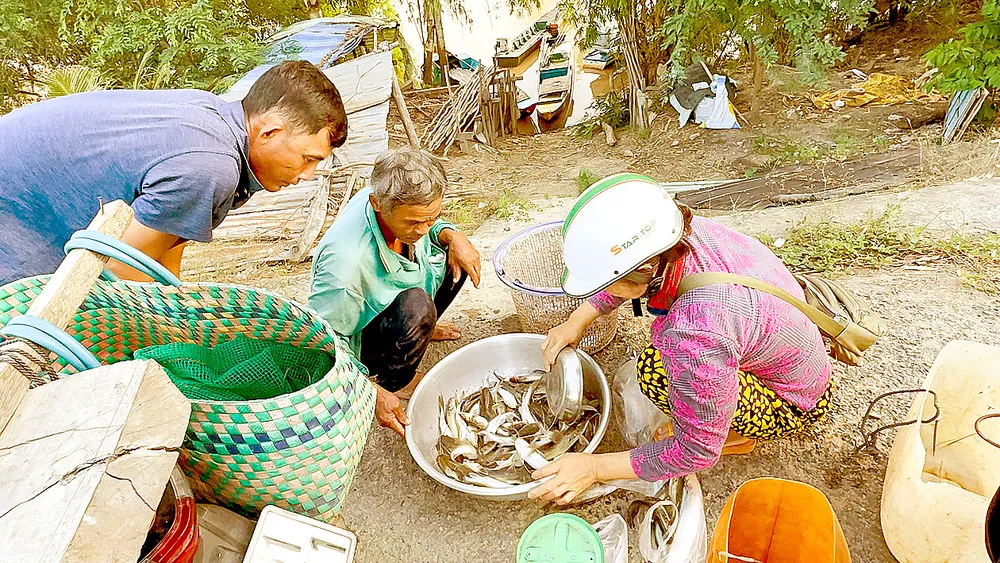
On the So Thuong River (Thuong Lac Commune), people have begun to cast nets to catch catfish and bream. According to locals, bream is a specialty, only available from June (lunar calendar) until floodwaters flood the fields.
Mr. Lam Van Teo (56 years old, Thuong Lac commune), who has nearly 40 years of making a living by fishing in the Hong Ngu border area, said that in previous years, there were a lot of fish, and during the flood season, farmers had a big profit. This flood season, there are not many special fish, but in return, the price is high, sometimes up to 300,000 VND/kg, so not only the people of Thuong Lac but also the people of Thuong Thoi Hau B also prepare boats, fishing tools, and nets to catch fish and earn extra income.
Pouring fish from the net bag into a basin to sell, Mr. Lam Van Teo said: "Every evening, we cast the net until morning and can harvest 2-3kg of catfish, in addition to many other types of fish.
The price of the catfish is high, we sort and sell it, the remaining miscellaneous fish are used to make a pot of fish stew with purple water hyacinth, green water spinach, red morning glory... adding flavor and color to the meals during the flood season. The children come back from school in the city, eagerly waiting for the whole summer, and we the elderly are extremely happy because it is a precious gift that nature gives to the people of the West every year.
Floodwaters poured down, dyeing the newly harvested rice fields in Thuong Lac commune red. Local farmers, though their faces were haggard, were full of excitement, their strong hands quietly casting nets, setting hooks, setting traps, laying traps, setting bait... to catch products with a short life cycle, following the flood to fill the immense, boundless fields.
Following the border route along the So Thuong River, passing the Cau Muong Border Guard Station, we found the source of the floodwater pouring into the Muong Dop field (Thuong Phuoc commune). Here, the Muong Dop sluices had been opened, and floodwater was flowing into the fields.
At noon, Mr. Tran Chi Thanh (48 years old, Thuong Phuoc commune), and his son bent their backs carrying the newly bought fishing nets from Tan Chau ( An Giang province), waded into the rice fields to place more than 20 fishing nets and set up more than a dozen fishing rods along both banks.
Mr. Thanh said, this year the flood came early, so the linh fish also came early. Since yesterday, I have sold nearly ten kilos of young linh fish. Traders came to buy them, I have extra money during the off-season and also have a hot pot of linh fish with sesban flowers and braised eel for family meals.
With the price of young linh fish ranging from 100,000-120,000 VND/kg, many people in Thuong Phuoc can earn millions of dong every day if they hit it big. Mr. Tran Van Keng (65 years old, Thuong Phuoc commune), known as a "genuine" farmer of the border area, excitedly pointed his black hand to the submerged bamboo, saying that the water came quickly, there were many shrimps and fish, this season our people will surely make a living.
In recent years, people in the southwestern border area (Dong Thap) have been unsuccessful in catching fish in Muong Dop field, but many years ago, when the flood came, Mr. Keng caught several dozen kilos of linh fish every day.
"That's why it's said that when floods come to the fields, farmers can earn millions of dong, which is a common thing," Mr. Keng affirmed firmly.
According to Mr. Huynh Van Cuoc, an official of the Economic Department of Thuong Phuoc Commune, the whole commune has 5 production zones, with a total area of over 5,200 hectares. Of which, 4 zones release floodwater to receive alluvium, creating favorable conditions for aquatic life to thrive. The dykes are still safe, and people have finished harvesting rice and crops, ready to enter the flood season.
In addition to supporting people in exploiting aquatic products during the flood season, local authorities also proactively coordinate with functional agencies to propagate people not to use electric pulses to catch fish, which depletes aquatic resources and endangers lives.
...and the seasons of many vegetables
Flooding the fields seems to bring prosperity and harmony. The flood season is also the season of the wild cotton trees, which follow the water and bloom bright yellow flowers, surrounded by swarms of honeybees.
Along with the yellow color is the purple-pink color of water hyacinth and lotus flowers stretching out, standing out on the water surface. The cool vegetables, water mimosa, red spinach… are also equally smooth, creating a poetic picture of the countryside at the source of the flood, dispelling the scorching heat in the hot weather of the southwestern border region.
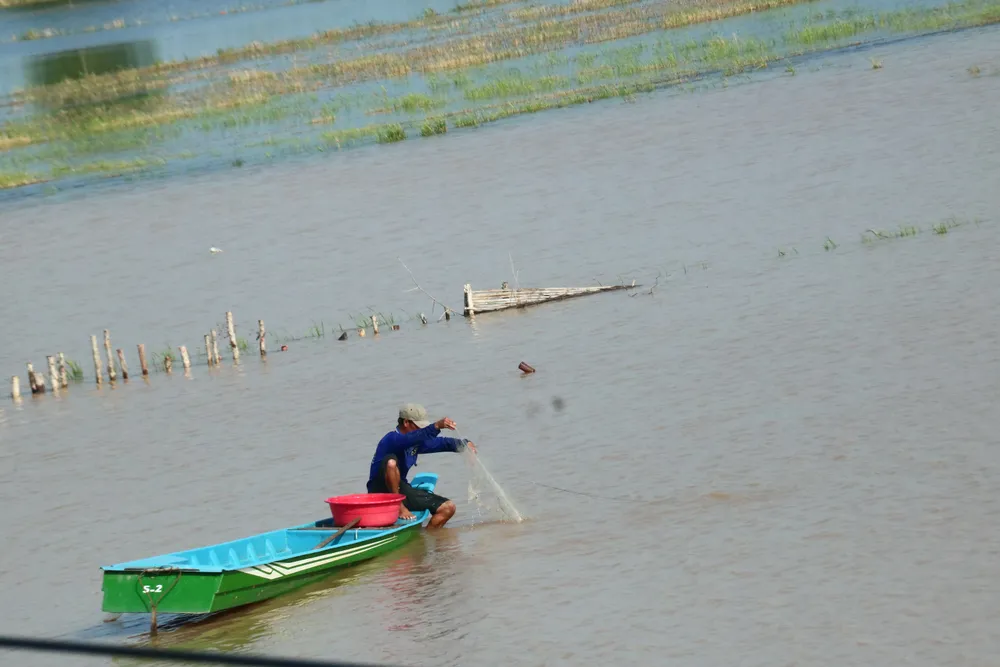
Rowing a small boat along the dike to cut water spinach, watching the water level slowly rise, Mrs. Nam Nien (60 years old, Thuong Phuoc commune) hummed a folk song: "Thap Muoi has salty water, sour fields. Half the season is scorching hot, half the season is rising water"...
In a few months, when the flood recedes and leaves fertile alluvial soil, ready for the new crop, farmers in the Mekong Delta hope for a bumper harvest. Along the border roads, many points of sale for flood season produce have appeared.
Ms. Le Thi Hoai (46 years old, Hong Ngu ward), a small trader specializing in buying and selling flood season products in Thuong Lac area, said, as an appointment, during the flood season, I prepare a temporary hut in the middle of the field to buy products from people. This year, young linh fish arrived early, it was the beginning of the flood season but the output was quite large, in addition to loach, eel, shrimp, crab, snail..., to cool vegetables, dien dien flowers, lotus flowers... These flood season specialties were purchased and supplied to the provinces, cities in the West and Ho Chi Minh City.
Leading a bicycle carrying a bunch of spinach and water lilies on the back seat, two bags of sesban flowers hanging on both sides of the handlebars, a heavy bag of snails in front of the basket, Mrs. Lam Thi Ly (65 years old, living near Muong Dop culvert) brought them to sell to Ms. Hoai. Although her income was less than 100,000 VND, Mrs. Ly was very excited, because the flood water helped her earn more income in her old age. For the elderly like Mrs. Ly, this season, wading out to the dry fields to catch snails, cutting bunches of newly sprouted, green vegetables, watching her children and grandchildren, the older ones casting nets, catching fish and shrimp, the younger ones swimming, their hearts filled with joy for a "beautiful" flood season.
Mrs. Ly confided that in recent years, people have been “thirsty for floods”. The thirst is caused by upstream, climate change, unscientific human intervention and natural imbalance. However, nature still gives farmers in the flood-affected areas a little bit of alluvial soil and products in response to their longing for the flood season.
After collecting the money, Mrs. Ly carefully pinned her pocket and climbed on her old, rickety bicycle and rode towards Muong Dop field. In the distance, the floodwaters flowed endlessly, and the people of the Dong Thap border area still maintained their lifestyle in harmony with nature and the water. The flood season in the West is like that, gentle, offering life the fragrance of alluvium and products that cannot be found anywhere else.
Source: https://www.sggp.org.vn/don-loc-vang-mua-nuoc-noi-post808630.html








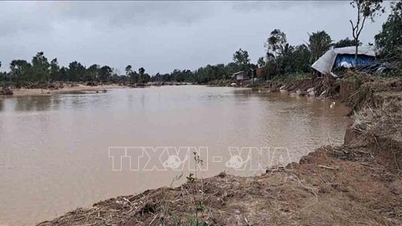


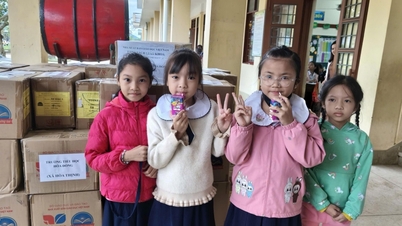



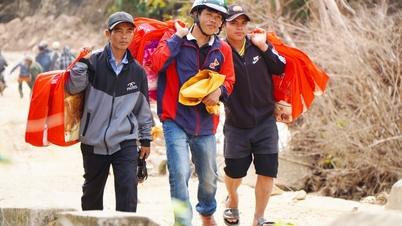
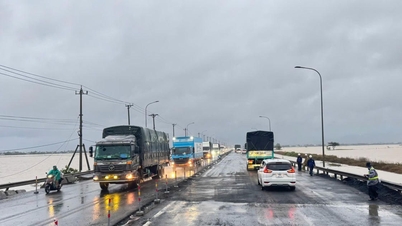




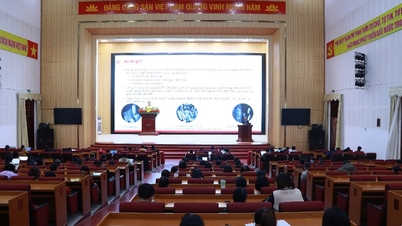

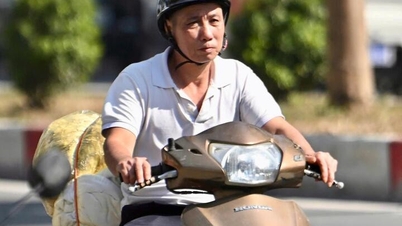

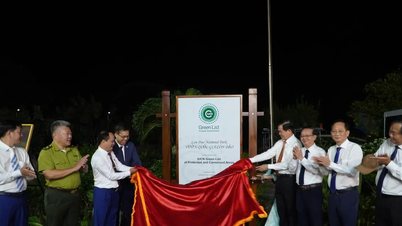








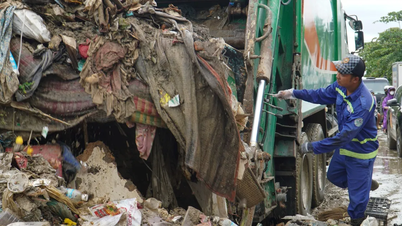

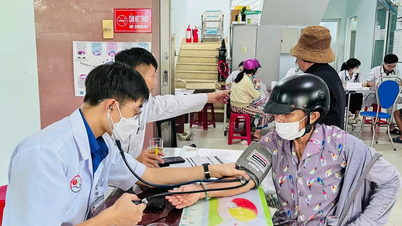



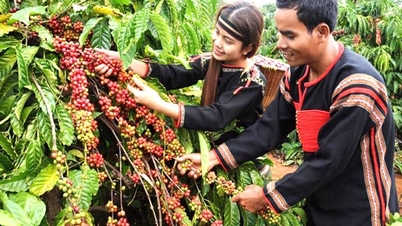



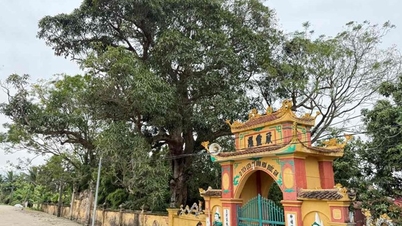

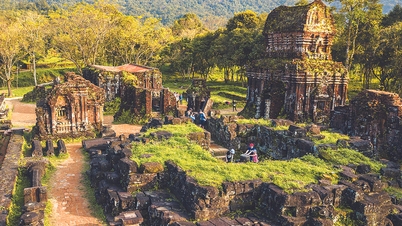
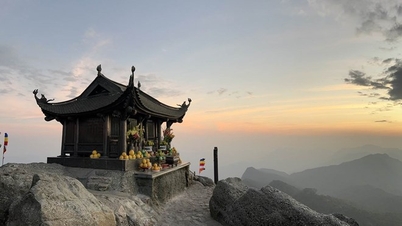
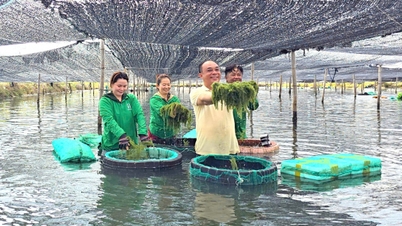












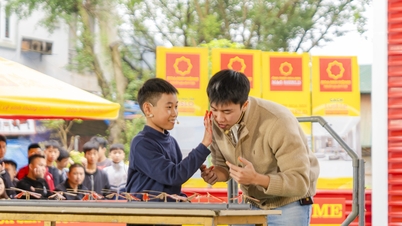



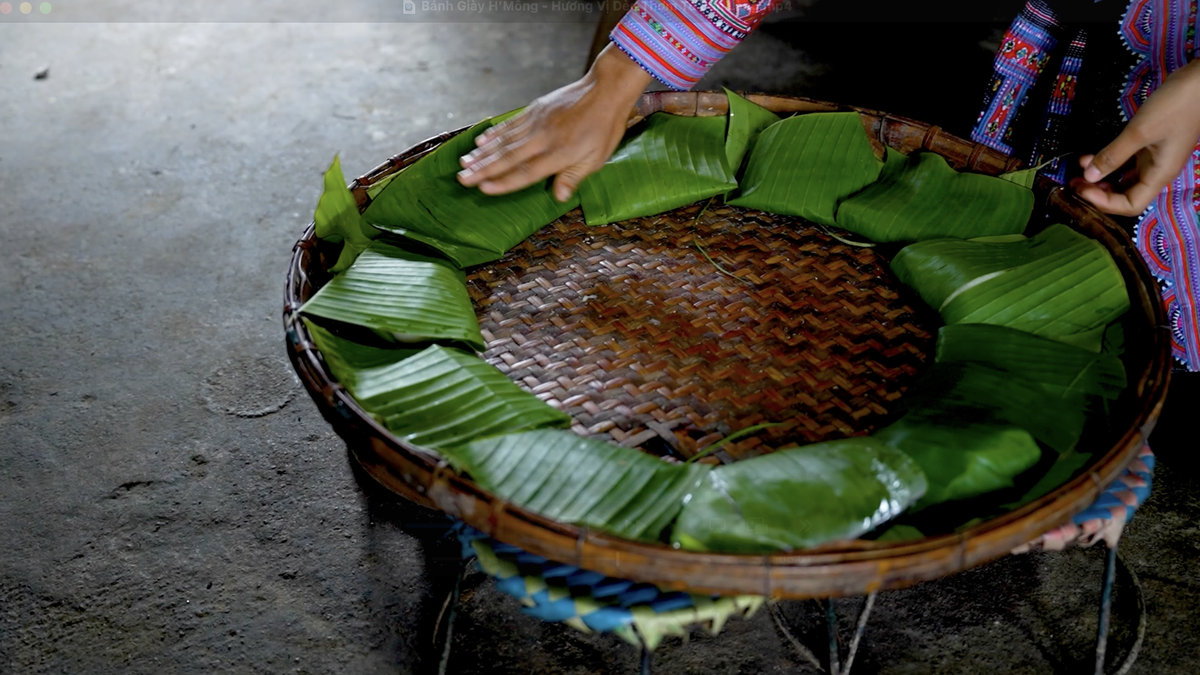

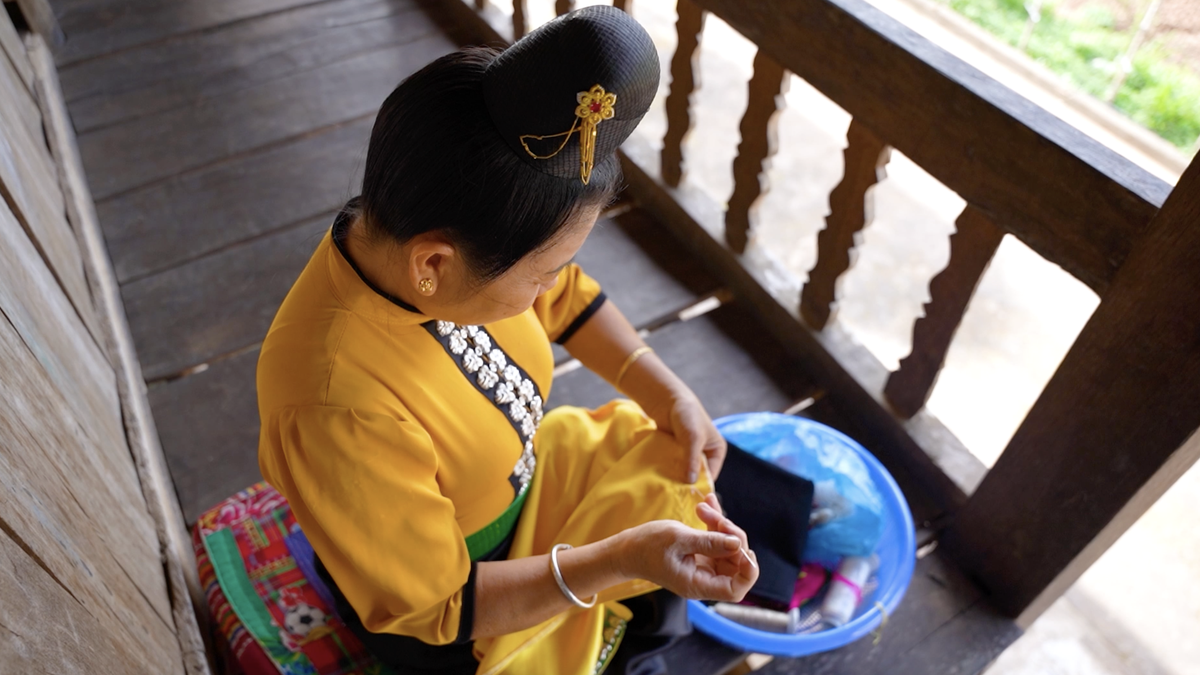

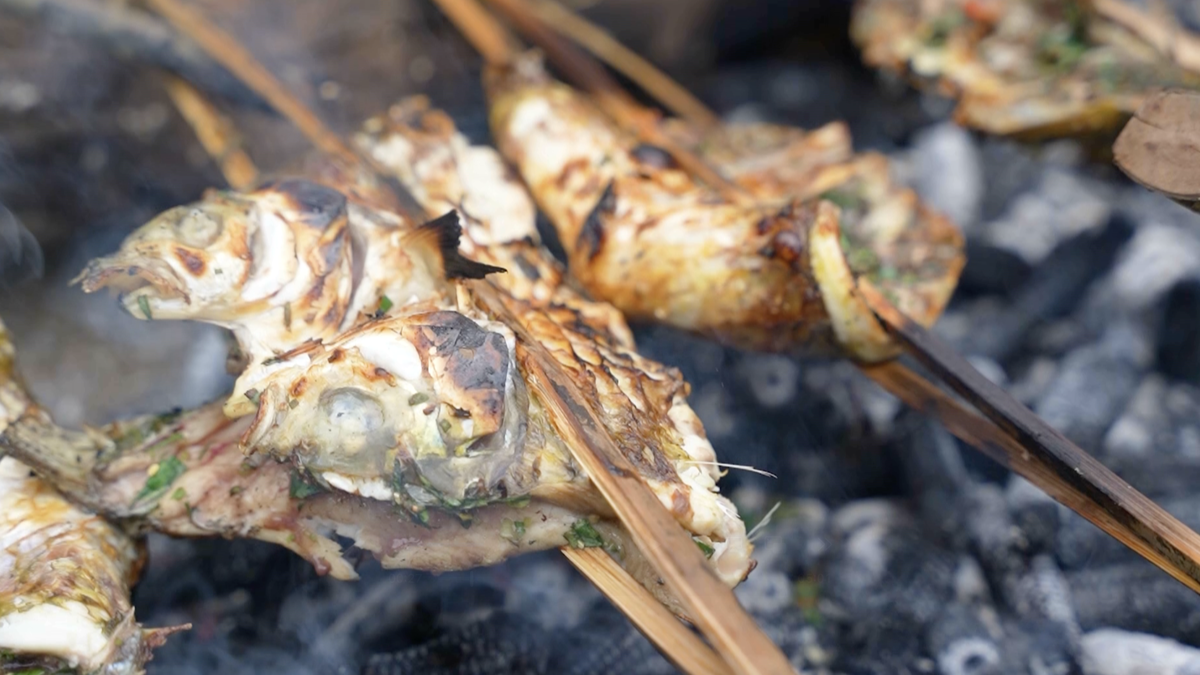
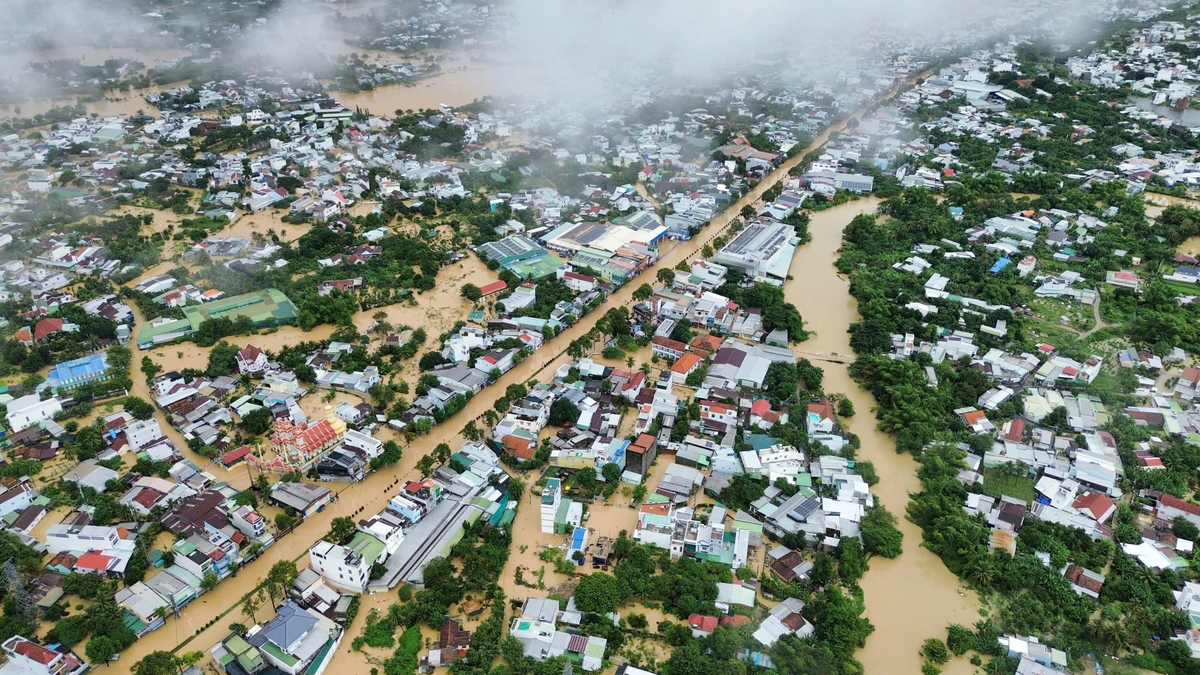


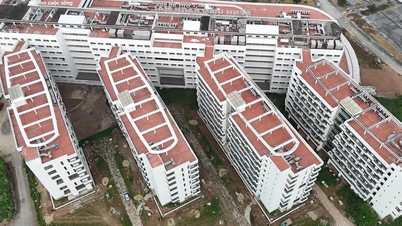

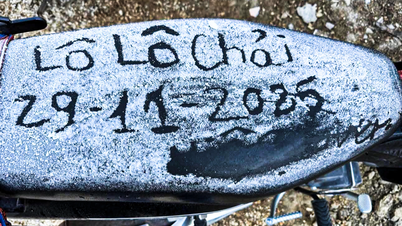













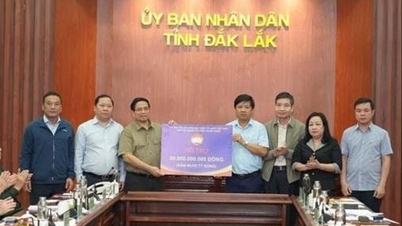



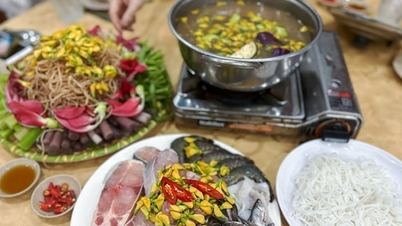
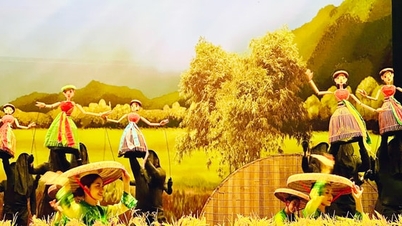

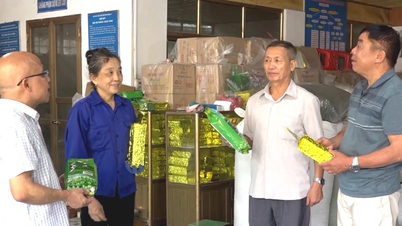












Comment (0)